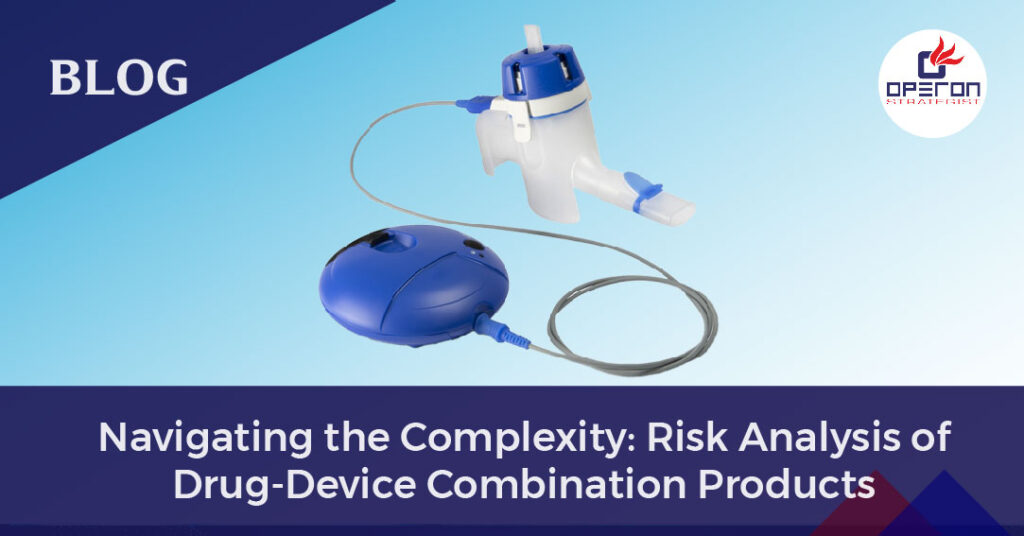Introduction: Risk Analysis of Drug-Device Combination Products
In the realm of modern healthcare, the convergence of pharmaceuticals and medical devices has led to the development of innovative treatment modalities known as drug-device combination products. These products offer unique therapeutic solutions by combining the benefits of pharmaceuticals with the precision and functionality of medical devices. However, with this innovation comes a complex landscape of regulatory requirements and inherent risks that necessitate comprehensive risk analysis.
Looking for a Medical Device Regulatory Consultant?
Understanding Drug-Device Combination Products
Before delving into risk analysis, it’s crucial to grasp the nature of drug-device combination products. These products encompass a wide range of medical treatments, including drug-eluting stents, inhalers, transdermal patches, and infusion pumps, among others. They are designed to deliver drugs or biologics in conjunction with a medical device, offering targeted delivery, improved efficacy, and enhanced patient outcomes.
Challenges in Risk Analysis of Drug-Device Combination Products
The multifaceted nature of drug-device combination products presents unique challenges in risk analysis. Unlike traditional pharmaceuticals or medical devices, these products require a harmonized assessment of both drug-related and device-related risks. Key challenges include:
- Interdisciplinary Collaboration: Effective risk analysis necessitates collaboration between pharmaceutical scientists, biomedical engineers, regulatory experts, and clinical practitioners. Bridging the knowledge gap between these disciplines is essential for identifying and mitigating risks effectively.
- Regulatory Compliance: Drug-device combination products are subject to stringent regulatory oversight from agencies such as the U.S. Food and Drug Administration (FDA) and the European Medicines Agency (EMA). Navigating the regulatory landscape requires a thorough understanding of the applicable guidelines and requirements, including those outlined in the FDA’s Combination Product Guidance and the EU Medical Device Regulation (MDR).
- Complex Manufacturing Processes: The manufacturing processes for drug-device combination products are inherently complex, involving the integration of drug formulation with device fabrication. Any deviations or failures in these processes can have significant implications for product safety and efficacy, highlighting the importance of risk assessment throughout the manufacturing lifecycle.
- Patient Safety Considerations: Patient safety is paramount in the development and deployment of drug-device combination products. Risks associated with device malfunction, drug toxicity, allergic reactions, and misuse must be carefully evaluated to minimize potential harm to patients.
Know more about The Challenges In Drug-Device Combination Products
Risk Analysis Framework
To effectively address these challenges, a structured risk analysis framework is essential. The following steps can guide the risk analysis process for drug-device combination products:
- Risk Identification: Identify and characterize potential risks associated with both the drug and the device components of the combination product. Consider factors such as product design, manufacturing processes, clinical use, and patient population.
- Risk Assessment: Evaluate the severity, likelihood, and detectability of identified risks using appropriate risk assessment tools and methodologies, such as Failure Mode and Effects Analysis (FMEA) or Hazard Analysis and Critical Control Points (HACCP).
- Risk Mitigation: Develop and implement risk mitigation strategies to reduce or eliminate identified risks to an acceptable level. This may involve design modifications, process improvements, enhanced quality control measures, or the development of risk management plans.
- Risk Communication: Communicate risk assessment findings and mitigation strategies effectively to stakeholders, including regulatory authorities, healthcare professionals, and patients. Transparency and clarity in risk communication are essential for fostering trust and ensuring informed decision-making.
Risk Management Process
Develop a cohesive, integrated plan at the start of the device development program
- Identify potential hazards
- Define how they could manifest to end users: harm, usability, performance
- Understand the severity of safety & clinical/medical implications of potential hazard realization: under/ over/ no dose, needle stick
- Estimate the risk profile: identify unacceptable risks – Understand device function & intent, knowledge & issues with similar & marketed products
- Eliminate potential hazards through design changes
- Define what can be controlled during manufacture – detectability
– Introduce controls, monitor effectiveness
– The clarity in labeling: IFU & information for safety
- Define the outstanding/residual risks once all controls are in place
- Does the device meet its intended use & need:
– Safe and Effective Use, Inc. through reference to the RLD
– Reliability specification - Additional considerations for generic CPs
– Are there new risks introduced with your CP vs the RLD – are they acceptable vs the risk profile of the product
– Use Comparative Analysis methodology early on to proactively understand & assess any such differences
Risk Management Usability
- Users: patients (paeds, adolescents, adults), caregivers, HCPs
- Intended application: chronic, acute, emergency use
- Frequency of device use: single or multiple use
- Frequency of dosing: rare, daily, weekly, monthly Concomitant medication, Patient comorbidities
- Experience with other devices – negative transfer
- Training/substitution: many users do not read the IFU
- Environment of use:
-inside/outside home, school, hospital, care-home
-family household medications – confusion in medication types/uses
Easily Register Your Drug-Device Combination Products
About Operon Strategist
Operon Strategist, your trusted medical device regulatory consultant, stands ready to guide you through the intricacies of risk analysis for drug-device combination products. With our expertise and collaborative approach, we ensure compliance and prioritize patient safety throughout the development, manufacturing, and regulatory approval processes. Partner with us to navigate the evolving healthcare landscape and unlock the full potential of innovative therapies, improving patient outcomes and enhancing quality of life. Contact us for further information.
- adminhttps://operonstrategist.com/author/admin-2/
- adminhttps://operonstrategist.com/author/admin-2/
- adminhttps://operonstrategist.com/author/admin-2/
- adminhttps://operonstrategist.com/author/admin-2/




